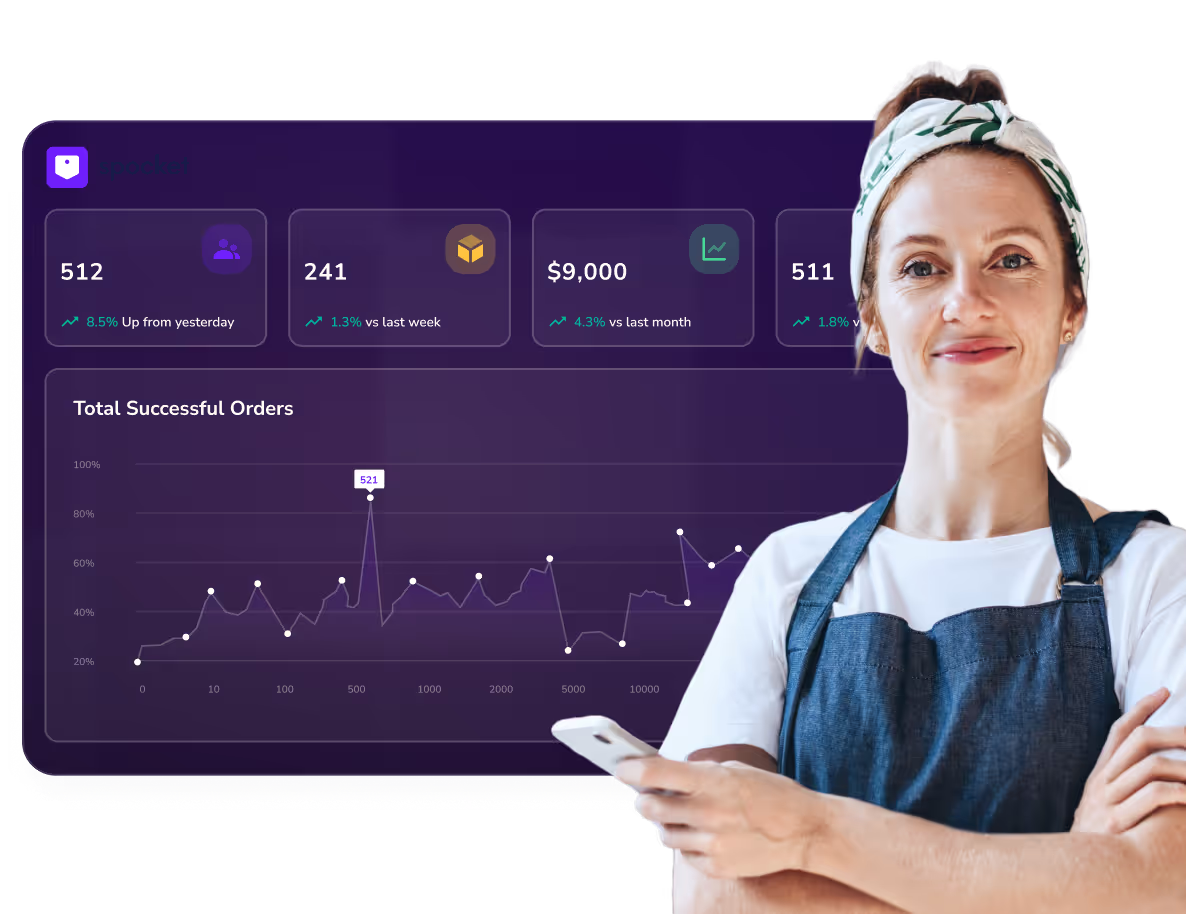Sustainability is no longer a buzzword; it’s a necessity. With industries contributing significantly to global carbon emissions, businesses are under increasing pressure to implement eco-friendly practices. One such crucial aspect of sustainable business operations is green logistics.
But what exactly is green logistics, and why does it matter for businesses? This guide will explore its importance, benefits, real-world examples, and how companies can transition to sustainable supply chain solutions.

Understanding Green Logistics
Green logistics refers to the adoption of sustainable practices in transportation, warehousing, and supply chain management to minimize environmental impact. It encompasses strategies such as reducing emissions, optimizing delivery routes, using eco-friendly packaging, and investing in energy-efficient warehousing. It also includes the use of digital transformation and AI-driven logistics systems to enhance efficiency while reducing waste and energy consumption.
In the past, traditional logistics operations focused mainly on speed and cost-effectiveness, often at the expense of environmental sustainability. However, with the growing awareness of climate change and corporate responsibility, companies are shifting towards greener logistics models that prioritize both economic and environmental benefits.
Why Is Green Logistics Important?
According to the International Transport Forum, global freight transport is responsible for over 7% of CO₂ emissions worldwide, and this number is expected to grow with increasing globalization and eCommerce demand. Traditional logistics contribute to environmental degradation through high fuel consumption, excess waste, and inefficient resource use. Green logistics is critical in reversing these trends by optimizing supply chains, reducing emissions, and ensuring sustainability in every step of the logistics process.
Beyond environmental concerns, companies also face regulatory pressures, such as the European Union’s Green Deal, which mandates emission reductions. Businesses that fail to comply with these evolving regulations risk fines, reputational damage, and loss of market competitiveness.
Green logistics also improves operational efficiency, leading to cost savings. Companies that optimize fuel usage, adopt energy-efficient practices, and invest in sustainable supply chains benefit from lower transportation costs, reduced waste disposal fees, and enhanced brand loyalty among eco-conscious consumers.
Key Components of Green Logistics
Green logistics is built on a foundation of sustainable practices that help businesses minimize their environmental impact while improving efficiency. From transportation to packaging and warehousing, each component plays a crucial role in creating a more eco-friendly supply chain.
1. Sustainable Transportation
Transportation is one of the biggest contributors to carbon emissions in logistics. Businesses can lower their carbon footprint by adopting the following measures:
- Electric and Hybrid Vehicles: Companies like UPS and Amazon are shifting to electric delivery vehicles to cut down emissions.
- Route Optimization: AI-driven route planning tools reduce fuel consumption by avoiding congested roads and unnecessary mileage.
- Rail and Water Transport: Switching from road to rail or sea transport reduces carbon emissions significantly compared to traditional trucking.
2. Eco-Friendly Warehousing
Warehouses consume a vast amount of energy for lighting, heating, and cooling. Implementing sustainable practices can lower costs and improve efficiency. Strategies include:
- Solar-Powered Warehouses: Many companies, including IKEA, have installed solar panels on their warehouse rooftops to reduce reliance on fossil fuels.
- Energy-Efficient Equipment: LED lighting, automated storage, and energy-efficient HVAC systems help cut energy consumption.
- Waste Management Systems: Recycling and reusing packaging materials reduce landfill waste and operational costs.
3. Sustainable Packaging Solutions
The packaging industry generates over 141 million tons of plastic waste annually, according to the OECD. Businesses can minimize waste through:
- Biodegradable Packaging: Companies like Lush and Patagonia use compostable materials to reduce plastic pollution.
- Minimalist Packaging: Reducing packaging layers cuts material usage and shipping costs.
- Reusable Containers: Encouraging customers to return packaging materials for reuse reduces waste and promotes circular logistics.
4. Reverse Logistics and Recycling
Reverse logistics focuses on returning goods for recycling, refurbishment, or disposal. A well-planned reverse logistics strategy can benefit businesses by:
- Reducing Waste: Products can be repurposed instead of ending up in landfills.
- Lowering Costs: Refurbishing returned products saves on raw material expenses.
- Enhancing Brand Reputation: Consumers are more likely to support brands with strong sustainability commitments.
Companies like Nike have adopted circular supply chains where old shoes are collected and repurposed into new products.
Benefits of Green Logistics for Businesses
Sustainability in logistics is no longer just an environmental concern—it’s a business advantage. Companies that adopt green logistics strategies benefit from cost reductions, operational efficiency, and improved brand reputation. Here’s how green logistics can positively impact your business:
1. Cost Savings
While transitioning to green logistics may require an initial investment, it significantly reduces operational costs in the long run. Fuel-efficient vehicles, optimized delivery routes, and energy-saving warehouses lead to lower expenses.
2. Regulatory Compliance
Governments worldwide are enforcing stricter environmental regulations. Adopting green logistics ensures compliance with laws such as the Paris Agreement and EU Green Deal, preventing potential fines and legal issues.
3. Enhanced Brand Image and Customer Loyalty
Consumers are increasingly choosing sustainable brands. A survey by Nielsen found that 73% of global consumers are willing to pay more for sustainable products. Businesses that commit to green logistics attract eco-conscious customers, fostering long-term loyalty.
4. Competitive Advantage
Sustainability is a key differentiator in modern commerce. Companies prioritizing eco-friendly supply chains gain a competitive edge over traditional logistics businesses.
How to Implement Green Logistics in Your Business
1. Partner with Sustainable Suppliers
Choosing the right suppliers is a critical first step in implementing green logistics. Businesses should seek out eco-conscious suppliers who prioritize sustainable production methods, ethical sourcing, and energy-efficient transportation. Platforms like Spocket provide access to vetted suppliers offering eco-friendly and ethically sourced products, allowing businesses to build a sustainable supply chain without compromising on quality or profitability.
Beyond product sourcing, companies should evaluate their suppliers' logistics practices, ensuring that they use minimal packaging, energy-efficient transportation, and fair labor practices. Long-term partnerships with responsible suppliers help businesses maintain consistent sustainability efforts across their operations.
2. Invest in Green Technology
Technology plays a crucial role in optimizing logistics and making operations more sustainable. Businesses can integrate advanced technologies to reduce their carbon footprint while enhancing efficiency. Some key technological investments include:
- AI and IoT for Route Optimization: Artificial intelligence and the Internet of Things (IoT) help businesses optimize delivery routes, reducing fuel consumption and emissions.
- Fleet Tracking Systems: Real-time GPS tracking allows businesses to monitor vehicle usage, identify inefficiencies, and implement strategies to reduce fuel waste.
- Electric and Hybrid Vehicles: Transitioning to electric delivery vans, trucks, and forklifts significantly cuts down greenhouse gas emissions.
- Warehouse Automation: Smart warehouse management systems reduce energy consumption by optimizing heating, cooling, and lighting based on real-time occupancy and need.
Investing in these green technologies not only enhances environmental sustainability but also improves overall business efficiency and cost savings.
3. Educate Employees and Customers
Sustainability efforts should extend beyond operational changes; businesses must also educate their employees, partners, and customers to drive long-term change.
- Internal Training Programs: Implementing sustainability training ensures that employees understand the importance of green logistics and actively contribute to reducing waste, conserving energy, and optimizing supply chain operations.
- Customer Awareness Initiatives: Businesses can educate customers on sustainable packaging disposal, promote reusable and recyclable products, and offer incentives for sustainable consumer choices.
- Encouraging Eco-Friendly Behaviors: Simple initiatives such as reducing paper waste, using energy-efficient lighting in offices, and encouraging carpooling among employees contribute to sustainability goals.
By integrating sustainability awareness into company culture, businesses can create a more engaged workforce and a loyal customer base that values eco-friendly practices.
4. Measure and Optimize Carbon Footprint
Sustainability efforts must be measurable to ensure progress and effectiveness. Companies can track their environmental impact by implementing carbon footprint monitoring tools such as:
- SustainaBase: Helps businesses calculate, track, and reduce their carbon emissions over time.
- EcoTransIT: Provides detailed insights into emissions generated by freight transport, helping businesses make data-driven decisions on sustainable transportation.
- GHG Protocol: A globally recognized tool that assists businesses in calculating greenhouse gas emissions across their supply chains.
To optimize sustainability performance, companies should:
- Set Clear Sustainability Goals: Define measurable targets, such as reducing emissions by a specific percentage over five years.
- Monitor Energy and Fuel Consumption: Regular assessments help identify inefficiencies and areas for improvement.
- Adopt Carbon Offset Programs: Partnering with environmental organizations to invest in carbon offset initiatives, such as tree-planting programs, can help counterbalance unavoidable emissions.
Real-World Examples of Green Logistics
Amazon’s Climate Pledge
Amazon has committed to reaching net-zero carbon emissions by 2040. The company has already invested in 100,000 electric delivery vans and launched the Shipment Zero initiative to make 50% of its shipments carbon-neutral by 2030.
DHL’s Green Logistics Strategy
DHL has introduced GoGreen Logistics, aiming to reduce emissions by 30% by 2030. Their initiatives include using alternative fuels, expanding electric fleets, and carbon offsetting programs.
UPS’s Rolling Laboratory
UPS has created a sustainable delivery network by experimenting with electric, hybrid, and hydrogen-powered vehicles. Their efforts have significantly reduced emissions and improved fuel efficiency.
Challenges in Implementing Green Logistics
While green logistics offers numerous benefits, businesses often face several challenges when adopting sustainable practices. Some of the key obstacles include:
- High Initial Investment Costs: Transitioning to eco-friendly vehicles, renewable energy sources, and optimized logistics systems can be expensive. Many companies hesitate due to the upfront capital required, even though long-term cost savings are substantial.
- Lack of Infrastructure: In many regions, infrastructure for sustainable logistics—such as charging stations for electric trucks or efficient rail freight networks—is still underdeveloped. This limits the feasibility of green initiatives for logistics providers.
- Complex Supply Chain Adjustments: Implementing green logistics requires businesses to rethink their entire supply chain. Finding sustainable suppliers, optimizing warehouse energy use, and minimizing packaging waste can be challenging without disrupting operations.
- Regulatory Uncertainty: While many governments are pushing for sustainability, the regulations vary by country and industry. Businesses may struggle to comply with constantly changing policies, creating uncertainty in long-term planning.
The Role of Technology in Green Logistics
Technology plays a crucial role in making logistics more sustainable. Advancements in artificial intelligence (AI), the Internet of Things (IoT), and automation have revolutionized how businesses manage their supply chains while reducing environmental impact.
- AI-Driven Route Optimization: Companies use AI algorithms to analyze real-time traffic data and optimize delivery routes, reducing fuel consumption and emissions.
- Electric and Autonomous Vehicles: Businesses are increasingly investing in electric trucks, drones, and self-driving delivery vehicles, significantly lowering carbon footprints.
- Smart Warehousing: IoT-enabled sensors monitor warehouse energy consumption, helping businesses reduce waste and implement more efficient heating, cooling, and lighting systems.
- Blockchain for Transparency: Blockchain technology enhances supply chain visibility, ensuring that companies work with sustainable suppliers and meet environmental compliance requirements.
- Sustainable Packaging Innovations: AI-driven design tools help companies minimize material usage while maintaining packaging durability, reducing overall waste.
The Future of Green Logistics
With increasing environmental regulations and growing consumer demand for sustainable business practices, green logistics is no longer just an option—it’s a necessity. Companies that fail to adopt eco-friendly solutions risk falling behind in an industry that is rapidly shifting toward carbon neutrality and sustainable operations.
Looking ahead, several key innovations will shape the future of green logistics:
- Autonomous Electric Vehicles (EVs): Self-driving electric trucks and delivery vans will reduce reliance on fossil fuels, lower emissions, and improve delivery efficiency. Companies like Tesla, Rivian, and Volvo are already investing in electric freight transportation.
- AI-Driven Route Optimization: Advanced machine learning algorithms will help logistics companies plan smarter, more efficient delivery routes, reducing unnecessary fuel consumption and decreasing emissions. AI-powered fleet management tools will also ensure vehicles operate at optimal efficiency.
- Sustainable Urban Logistics: In congested cities, companies will increasingly rely on cargo bikes, electric scooters, and drone deliveries to handle last-mile logistics. Amazon, UPS, and FedEx are already testing drone technology to reduce delivery-related carbon footprints.
- Eco-Friendly Warehousing: Warehouses will shift towards solar-powered facilities, smart temperature control systems, and automated inventory management to optimize space utilization and minimize energy waste.
- Green Packaging Innovations: Companies will replace plastic and excessive packaging with biodegradable, recyclable, and reusable materials to reduce waste and pollution.
As global supply chains transition toward greener alternatives, businesses that embrace sustainability will gain a competitive edge, attract eco-conscious consumers, and contribute to a healthier planet. Companies that invest in green logistics today will not only cut costs and enhance efficiency but also future-proof their operations against stricter environmental laws and rising fuel prices.
Final Thoughts
Green logistics is an essential step toward sustainable business operations. By reducing carbon footprints, optimizing supply chains, and embracing eco-friendly solutions, businesses can enhance profitability while protecting the environment. Whether through electric fleets, energy-efficient warehouses, or partnerships with sustainable suppliers like Spocket, every step towards green logistics makes a difference.
Embracing green logistics is not just a trend; it’s the future of eCommerce and supply chain management. Companies that start today will reap the benefits of cost savings, customer loyalty, and regulatory compliance, securing long-term success in an increasingly eco-conscious world.







































